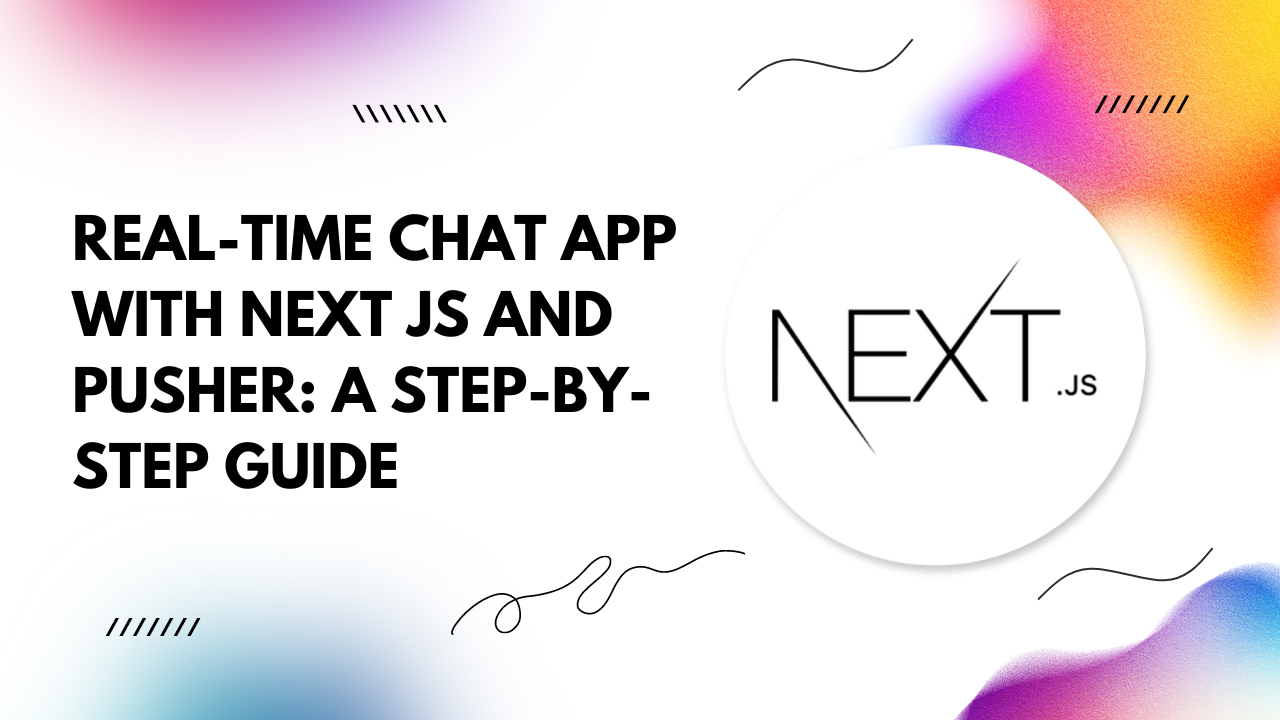In this guide, we'll explore how to create a dynamic chat application using Next.js, a popular React framework, and Pusher, a real-time communication service.
Why Next.js and Pusher?
Next.js offers server-side rendering, automatic code splitting, and simple client-side routing, making it an excellent choice for building interactive web applications. Pusher provides easy-to-use APIs and libraries for adding real-time functionality to your applications, allowing users to communicate instantly without refreshing the page.Getting Started
First, ensure you have Node.js and npm installed on your system. Then, create a new Next.js project by running:npx create-next-app my-chat-app cd my-chat-app
npm install pusher-js
Setting Up Pusher
Sign up for a free Pusher account at pusher.com and create a new app. Note down your app credentials, including the app ID, key, secret, and cluster.In your Next.js project, create a file named `.env.local` in the root directory and add your Pusher credentials:
PUSHER_APP_ID=your_app_id PUSHER_KEY=your_key PUSHER_SECRET=your_secret PUSHER_CLUSTER=your_cluster
Creating the Chat Component
Now, let's create the chat component. In the `pages` directory, create a new file named `chat.js`. This will represent our chat page.
// pages/chat.js
import React, { useState, useEffect } from 'react';
import Pusher from 'pusher-js';
const Chat = () => {
const [messages, setMessages] = useState([]);
const [newMessage, setNewMessage] = useState('');
useEffect(() => {
const pusher = new Pusher(process.env.PUSHER_KEY, {
cluster: process.env.PUSHER_CLUSTER,
encrypted: true,
});
const channel = pusher.subscribe('chat-channel');
channel.bind('new-message', (data) => {
setMessages((prevMessages) => [...prevMessages, data.message]);
});
return () => {
pusher.unsubscribe('chat-channel');
};
}, []);
const handleMessageChange = (e) => {
setNewMessage(e.target.value);
};
const sendMessage = () => {
// Send message logic here (e.g., via an API)
};
return (
<div>
<h1>Real-time Chat</h1>
<div>
{messages.map((msg, index) => (
<div key={index}>{msg}</div>
))}
</div>
<input type="text" value={newMessage} onChange={handleMessageChange} />
<button onClick={sendMessage}>Send</button>
</div>
);
};
export default Chat;
Configuring Pusher Channels
In your Pusher dashboard, create a new channel named `chat-channel`.Handling Messages
Implement the `sendMessage` function to send messages to Pusher and update the state accordingly.Testing
Start your Next.js development server by running:npm run dev
Conclusion
Congratulations! You've successfully built a real-time chat application using Next.js and Pusher. With this foundation, you can further enhance the app by adding features like user authentication, message persistence, and multimedia support.Real-time communication has never been easier to implement, thanks to the power of Next.js and Pusher. Happy coding!
